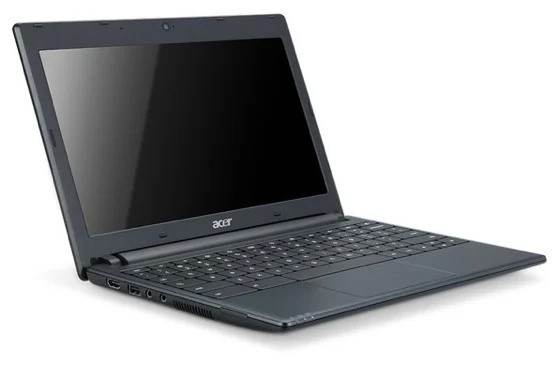
Google Workspace vs. Microsoft 365: My Experience Across School and Work
A Firsthand Account of How These Cloud Productivity Suites Influenced My Academic and Professional Growth
Growing Up in a Digital World
Like the rest of my Gen Z peers, I have grown up in a Golden Age of technology. This means my childhood and teenage years were constantly inundated with new technologies, inside and outside the classroom. I’ve been asked to recount my real life experiences using Google Workspace and Microsoft 365 in my personal, educational, and professional settings in order to capture which cloud productivity suite is truly ideal for all aspects of life.
My First Device: The Chromebook

In order to understand my relationship with both of these productivity suites, we must rewind to the first physical tech advancement that sticks out to me: the Chromebook. As a child, Chromebooks were revolutionary. Released in the early 2010s, Chromebooks were a state-of-the-art introduction to personal devices for me and my classmates. From my late elementary school years all the way through high school graduation, I was lucky enough to have access to a Chromebook, provided by our school administrators. As my classmates and I aged, we were allowed greater use of this technology for a mix of in-school and out-of-school work. I found the device lightweight, easy to use, and (perhaps most importantly for students) resilient. We dropped and abused these machines like you wouldn’t believe, but they continued to be there for us throughout the years. As a young learner, I was excited at the prospect of having a personal device, and the Chromebook offered me the opportunity to take on more responsibility for my learning.
Discovering Google Workspace
I first encountered Google Workspace (then called Google Apps for Education) in an academic setting in 2011, as I entered fifth grade. This was the same time I first gained access to a Chromebook. The custom organization and user-friendly interface allowed me to competently navigate the changing technological landscape of my schooling experience. I remember thinking it was extremely user-friendly, even for a nine year old. At this point in the early 2000s, teachers and students alike were beginning to understand the importance of individual technology for students. Google Workspace allowed me to work seamlessly with my classmates on group projects, as I began to build my research skills for the first time. The ability to collaborate with group members in a digital space added a new dimension to group projects that I hadn’t experienced before. Building presentations with my classmates in Google Slides on the histories of ancient Egypt and Greece, all while playing around with backgrounds and transitions, allowed me to grow my academic and creative skills in the classroom. These are formative years for every child, and my access to Google Workspace gave me the chance to develop invaluable skills I wouldn’t have gained otherwise.
From Middle School to High School
As I got older, and entered middle school and high school, my academic and personal needs changed. By 2015, I began to truly appreciate the automatic, cloud-based storage of Google when working on long-form essays and research projects. Horror stories of forgetting to save the essay you spent all day working on were just fables to me. I found that Google Workspace allowed me to take control of my learning and have agency in the way I structured my education; I took notes in Google Docs, created class presentations with Slides, budgeted for college applications with Sheets, and communicated with my teachers and classmates using Gmail. As a student who has lived through a time of educational technological exploration and transition, and as an educator myself, I see the immense value in Google Workspace as a primary tool for growing independent and technologically capable learners. Thanks to this technology, I’m one of them!
A College Introduction to Microsoft 365
When I transitioned to college in 2019, I was introduced for the first significant time to Microsoft 365 (then called Office 365). My university generously provided all students with free access to the suite of apps for the duration of my enrollment. At first, I was excited about this prospect. Knowing that the cost of these applications (a steep asking price for a college student) would be reduced to zero, erased my hesitancy and allowed me to explore Microsoft 365 freely. From the start, Outlook for email and calendar worked beautifully and the integration between the two was perfect. At first, I was wary of details like icon functionality and the “add to calendar from mail” function, but I soon found them to be shortcut bonuses that helped me save time. I had no difficulty transferring my technological habits from Google to Microsoft… at least at first.
Difficulties with Microsoft 365
Difficulties quickly began to arise when I attempted to use other Microsoft 365 programs. I found the user interface for Word and PowerPoint convoluted and inaccessible. As someone who likes to stay organized, I was frustrated by the difficulty of grouping my documents into folders designated for classes, job applications, and personal writing, which was something I had been able to do with a few easy clicks when using Google Workspace. The collaboration features in Microsoft 365 were not intuitive, and my classmates and I often had to find workarounds or spend considerable time troubleshooting Microsoft’s interface. We often chose to meet in person or used video calling apps to talk with each other in real time, rather than try to fumble our way through the Microsoft sharing process, which never seemed to work as well as anyone hoped.
Struggles with Microsoft Teams
I begrudgingly used Teams to interact with coworkers at several on-campus jobs. The mobile app was clunky at best, and laptop access was buggy and slow. I chose to message coworkers through text or email, or visit them in person to avoid the hassle of Teams. As my college years fell squarely in the timeframe of the Covid-19 pandemic, the lack of Teams usability for remote conversation was not ideal.
Returning to Google Workspace
I thought back to my days using Google Workspace. I remembered the chat feature had been useful in my days of high school group projects. Where was that same utility and ease in the Microsoft 365 interface?
A few months into my undergraduate degree, overwhelmed and scattered, and staring down the barrel of remote learning, I opted to begin using my own personal Google Workspace account (together with Outlook for email and calendar) in order to retain all the features I loved about Google Workspace, while also staying within my university’s internal messaging directory. If I was going to stay in school and continue to work on my degree during a time when virtual communication was the only way to access my professors and peers, I needed an interface that worked to make my life easier and wouldn’t add unnecessary stress. My school’s Microsoft 365 access just wasn’t cutting it anymore, so I had to take matters into my own hands.
Realizing a Preference for Google Workspace
Remarkably, I found that most of my peers had done the same thing. During the height of the pandemic, when collaboration was only possible through technology, I found that I didn’t know anyone who used their university-provided Microsoft 365 account! Nearly everyone I spoke to in my courses had chosen to use a personal Google account to do their college work. With this reinforcement from my peers, I found that I was not interested in trying to strongarm Microsoft 365 into working for me.
A Workaround for Microsoft Files
From then on, when a Word file was necessary for uploading assignments to Canvas, my school’s Learning Management System, I simply converted my documents from the toolbar in Docs, ensured the document was named correctly before uploading, and called it a day. This three-click transformation from .doc to .docx was annoying but ultimately caused no real hassle, until Word began automatically reformatting my Google Docs to fit its own specifications! At this point, I was grateful my professors’ Canvas pages often accepted PDFs, allowing me to avoid using Microsoft apps altogether. I was completely fed up with Microsoft 365, and I have not used the suite since my first year of college, nearly 6 years ago.
Any utility of Microsoft’s link with common LMS (Learning Management System) software like Canvas was undercut by the fact that Word and the rest of the Microsoft 365 applications were too difficult to manage, organize, and share in comparison to Google Workspace.
Final Thoughts: The Best Choice for Me
Now, as a graduate student and teacher, I’m grateful that my university, and the schools I teach in, have largely opted to use Google Workspace. I can breathe a sigh of relief again, and know that my job will not be made more difficult by the technology I’m using. I find Google Workspace more familiar and accessible for myself and, most importantly, for my students. This preference practically speaks for itself. The next generation of students is already entering the classroom and, just as it was nearly 20 years ago, Google Workspace is the only real option for people who want a user-friendly interface, seamless collaboration tools, and a cloud-based format. There’s no question in my mind which suite of applications I prefer. Whether as a student, an educator, or in my personal life, Google Workspace has consistently been the best choice for me.
About the Author

Abby reflects on her experiences using Google Workspace and Microsoft 365, exploring their impact on her education and career. She is not only the author of this article but is also currently a master's student at Teachers College, Columbia University, and a magna cum laude graduate of Ithaca College.

